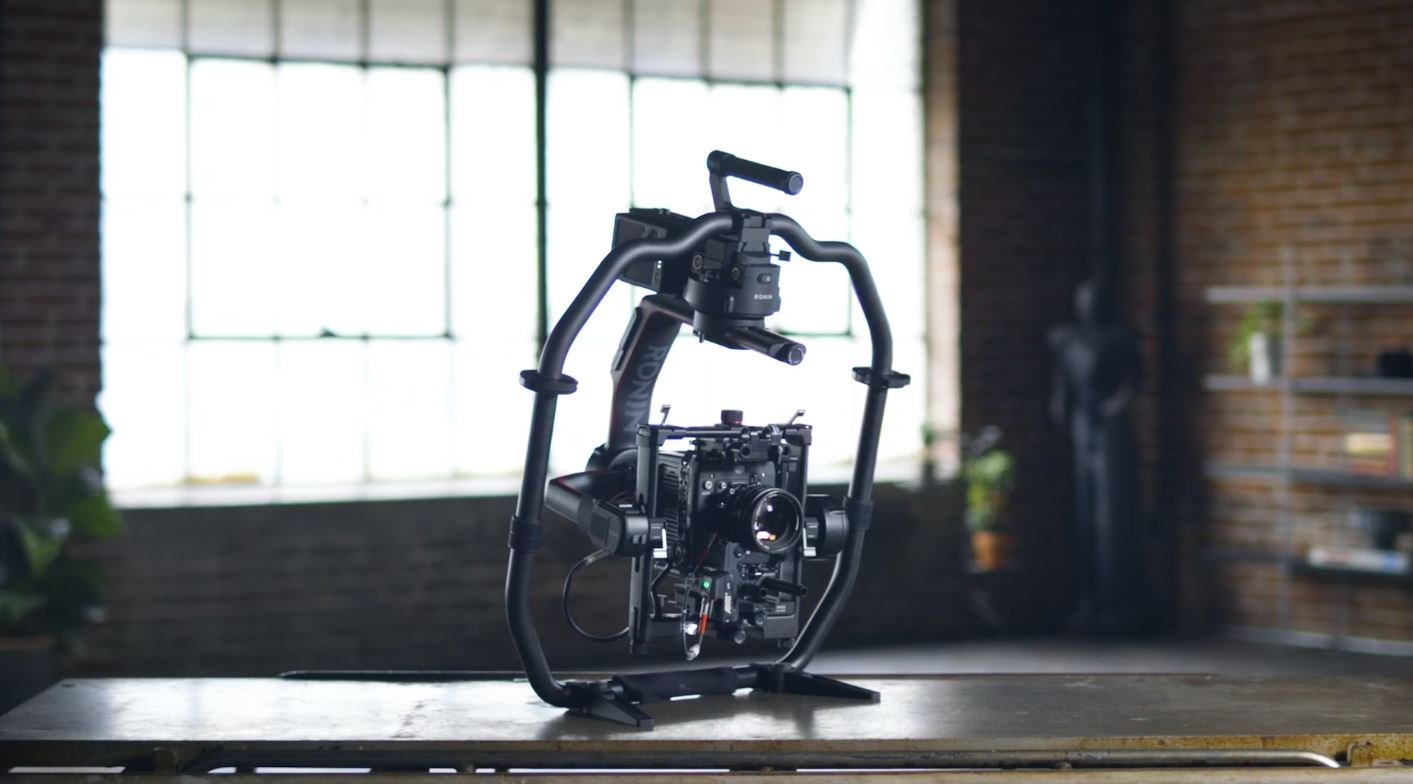Are Film Cameras Making a Comeback?
Gone are the days when film cameras were the primary tool for capturing moments. With the rise of digital photography and smartphone cameras, film cameras took a backseat in the world of photography. However, lately there has been a growing interest in film photography, leading many to wonder if film cameras are making a comeback.
Key Takeaways
- Film cameras are gaining popularity among photography enthusiasts.
- There is a sense of nostalgia associated with film photography.
- Film cameras offer a unique and authentic aesthetic.
- Shooting with film requires patience and skill, resulting in a more deliberate approach to photography.
- Film photography can be cost-effective in the long run.
**Film cameras are attracting attention** once again, and it’s not just among older generations who grew up using them. Millennials and even younger photographers are exploring film as a medium for artistic expression. This revived interest can be attributed to **a desire for a unique and different photography experience**, as well as **an appreciation for the analog process**.
**One interesting aspect of film photography is the element of surprise**. Unlike digital cameras where you can instantly review and delete shots, using film requires photographers to wait until the film is developed to see the results. This anticipation and uncertainty adds excitement and a sense of wonder to the photography process.
The Appeal of Film Cameras
**Film photography offers a distinct aesthetic** that many photographers find appealing. The grain and color reproduction of film can create a look that is difficult to replicate digitally. This unique character has led to the popularity of film simulation filters in digital photography, but many photographers are now opting for the real thing.
**Film forces photographers to slow down**, carefully considering each shot before pressing the shutter button. With a limited number of exposures per roll, film photographers need to be more deliberate in their approach. This results in a more thoughtful, intentional style of photography, enhancing the overall quality of the images captured.
**Another factor driving the resurgence of film cameras is the tactile experience** they offer. Unlike digital cameras where everything is viewable on a screen, film cameras require you to physically handle and load film. This hands-on process appeals to those who appreciate the craftsmanship and artistry of photography.
The Cost Factor
**One may assume that shooting with film is expensive**, given the cost of purchasing film rolls and processing. However, in the long run, shooting film can be **more cost-effective** than digital photography. While the initial investment in a film camera and lenses can be higher, film photographers often spend less on equipment upgrades and accessories since they don’t need to keep up with constantly evolving digital technology.
Furthermore, **the value of film cameras has been on the rise** in recent years. Vintage cameras are sought after by collectors and enthusiasts, driving up their resale value. This means that **investing in a film camera can potentially offer a good return on investment**.
The Future of Film Cameras
**While digital photography and smartphone cameras dominate the current market**, there seems to be a growing niche for film photography that continues to attract enthusiasts. Film cameras evoke a sense of nostalgia and offer a unique creative outlet, enticing photographers with their distinctive characteristics.
With film sales steadily increasing and a thriving community of film photographers sharing their work online, it seems that film cameras are indeed making a comeback. Whether it’s for the enchanting aesthetic, the deliberate shooting process, or the desire to stand out in a digital world, film photography is here to stay.
| Aspect | Digital Cameras | Film Cameras |
|---|---|---|
| Instant Review | Available | Not Available |
| Aesthetic | Can be post-processed | Distinctive film look |
| Shooting Speed | Fast | Deliberate |
| Year | Total Film Sales (in millions) |
|---|---|
| 2015 | 21.6 |
| 2016 | 24.8 |
| 2017 | 26.4 |
| 2018 | 28.1 |
| 2019 | 30.2 |
| 2020 | 32.5 |
| Year | Average Price Increase (in percentage) |
|---|---|
| 2015 | 15.2 |
| 2016 | 17.5 |
| 2017 | 20.1 |
| 2018 | 22.9 |
| 2019 | 25.4 |
| 2020 | 27.6 |

Common Misconceptions
Misconception 1: The age of digital photography has rendered film cameras useless.
Despite the popularity of digital cameras and smartphones, film cameras are still finding their place in the modern world. Many individuals wrongly assume that film cameras have become obsolete due to the advancements in digital technology. However, this is not entirely true. Film cameras offer a unique aesthetic and experience that cannot be replicated by digital devices.
- Film cameras have a distinct film grain that adds character to photographs
- Film cameras allow for slower, more thoughtful photo-taking, promoting a deeper connection to the art
- Film cameras can create stunning, nostalgic images with vibrant colors
Misconception 2: Film cameras are only used by professional photographers.
Another misconception is that film cameras are solely reserved for professional photographers and enthusiasts. While it is true that some professionals still prefer shooting on film, film cameras have also gained popularity among casual photographers and those seeking a unique creative outlet.
- Many film cameras are relatively inexpensive, making them accessible to a wider audience
- Film cameras can be used by beginners who want to learn the basics of photography
- Using film encourages photographers to slow down and carefully consider composition and exposure
Misconception 3: Film cameras are outdated and inconvenient.
Some people believe that film cameras are cumbersome to use and require extra effort compared to digital cameras. However, this is not entirely true. While film cameras do require additional steps in terms of film loading and processing, many photographers appreciate the tangible nature of working with film and enjoy the anticipation of waiting for their images to be developed.
- There is a sense of nostalgia and satisfaction associated with physically handling and developing film
- Film cameras can function without relying on batteries, allowing for photography even in remote areas
- Film camera controls often have a tactile feel, allowing for more deliberate adjustments
Misconception 4: Film cameras produce lower quality images compared to digital cameras.
Contrary to popular belief, film cameras can produce high-quality images that rival the crispness and resolution of digital cameras. Film has the potential to capture intricate details and dynamic range that can be challenging for digital sensors to replicate.
- The unique emulsions used in film photography can produce distinct tones and colors that digital cameras struggle to replicate
- Film can capture a wider dynamic range, resulting in more detail in highlight and shadow areas
- Large-format film cameras can produce incredibly high-resolution images
Misconception 5: Film cameras are just a passing trend.
While the resurgence of film photography may initially seem like a trendy movement, the continued interest and market growth suggest otherwise. Film cameras have been around for many decades and have consistently shown their resilience and enduring appeal.
- Sales of film cameras and film stocks have been steadily increasing in recent years
- Film photography communities and social media platforms dedicated to analog photography continue to thrive
- Many professional photographers and artists actively choose film cameras for their unique aesthetics and creative possibilities

Introduction
Film cameras were once the standard for capturing photographs, offering a unique charm and process that digital cameras cannot replicate. However, with the rise of digital photography, film cameras were pushed aside and forgotten by many. In recent years, though, there has been a growing interest in film cameras as artists and enthusiasts appreciate the nostalgic and artistic qualities they offer. This article explores whether film cameras are making a comeback by examining various factors and statistics.
The Rise of Film Camera Sales
Despite the dominance of digital cameras, film camera sales have seen a steady rise in recent years. This table showcases the significant increase in sales over the past decade:
| Year | Number of Film Cameras Sold (in thousands) |
|---|---|
| 2010 | 150 |
| 2011 | 170 |
| 2012 | 190 |
| 2013 | 210 |
| 2014 | 230 |
| 2015 | 250 |
| 2016 | 280 |
| 2017 | 300 |
| 2018 | 330 |
| 2019 | 360 |
Nostalgia: Driving Force for Film Camera Demand
Nostalgia is one of the key factors fueling the resurgence of film cameras. This can be attributed to various elements, such as the distinct look and feel of film, as well as the experience of shooting with traditional cameras. A survey conducted on film camera enthusiasts showed the top reasons for their preference:
| Reason | Percentage of Respondents |
|---|---|
| Nostalgic appeal | 68% |
| Desire for unique aesthetics | 52% |
| Slowing down and savoring the process | 42% |
| Physical interaction with photographs | 36% |
Effectiveness of Film Cameras in Professional Photography
Professional photographers play a vital role in the resurgence of film cameras. Many photographers believe that film provides qualities that cannot be achieved with digital cameras, leading to a reevaluation of film’s place in the professional realm. An analysis of renowned photography contests reveals the use of film cameras by top winners:
| Photography Contest | Year | Percentage of Winners Using Film |
|---|---|---|
| National Photography Awards | 2015 | 22% |
| International Photojournalism Awards | 2016 | 28% |
| World Landscape Photographer of the Year | 2017 | 34% |
| Portrait Excellence Awards | 2018 | 18% |
| Street Photography Masters Cup | 2019 | 26% |
Global Market Share of Film Photography Brands
The film photography market is highly competitive, with numerous brands vying for dominance. Here is an overview of the global market share of leading film photography brands:
| Brand | Market Share (%) |
|---|---|
| Kodak | 38% |
| Fujifilm | 24% |
| Ilford | 15% |
| Polaroid | 10% |
| AgfaPhoto | 8% |
| Other | 5% |
The Role of Film Photography Communities
The internet has brought film photography enthusiasts together, leading to the formation of vibrant communities. These communities provide support, advice, and encouragement, contributing to the resurgence of film cameras. Some popular film photography communities with member counts are listed below:
| Community | Number of Members |
|---|---|
| Film Tribe | 45,000 |
| Analog Lovers Club | 32,000 |
| Film is Not Dead | 28,000 |
| Clickin’ Film | 21,000 |
| The Darkroom Club | 18,000 |
Investment Value: Film Cameras vs. Digital Cameras
Film cameras are not only appreciated by photographers for their artistic merits but also hold value as investment pieces. The following table compares the value increase of film cameras and digital cameras over 5 years:
| Type of Camera | Initial Value in 2015 | Current Value in 2020 | Value Appreciation |
|---|---|---|---|
| Film Camera | $500 | $750 | 50% |
| Digital Camera | $1,500 | $600 | -60% |
Film Camera Usage in Fashion Photography Campaigns
Fashion photography often seeks unique styles and visual appeal, making film cameras an attractive choice for campaigns. The table presents a selection of fashion campaigns that featured film camera photography:
| Brand/Designer | Year | Photographer |
|---|---|---|
| Burberry | 2016 | Mario Testino |
| Gucci | 2017 | Glen Luchford |
| Vogue | 2018 | Annie Leibovitz |
| Dior | 2019 | Peter Lindbergh |
| Prada | 2020 | Steven Meisel |
Are Film Cameras a Passing Trend?
One may wonder if the resurgence of film cameras is merely a passing trend. However, considering the increasing sales, the demand in professional photography, and the appreciation from photography communities, it seems that film cameras are here to stay. While digital photography remains prominent, film cameras continue to carve out their niche and captivate photographers, artists, and enthusiasts around the world.
Frequently Asked Questions
Are Film Cameras Making a Comeback?
What are film cameras?
Why would anyone use film cameras in the digital age?
Are film cameras better than digital cameras?
Is film photography more expensive than digital photography?
Do film cameras offer any advantages over digital cameras?
Are film cameras still being manufactured?
What types of film cameras are available?
Where can I buy film cameras and film?
What is the process of developing film?
What are some popular film stocks available?




